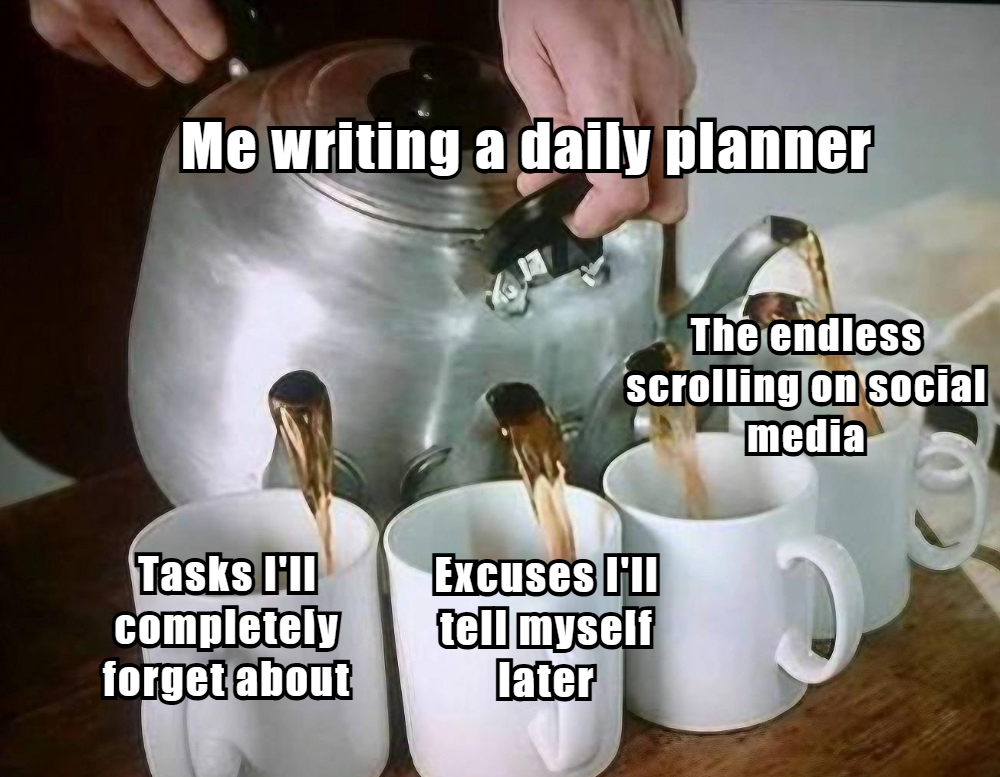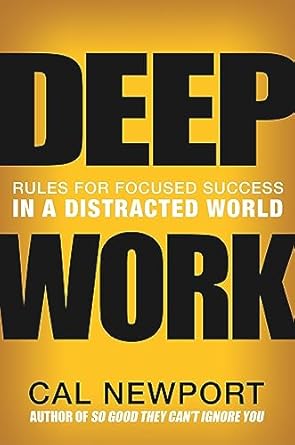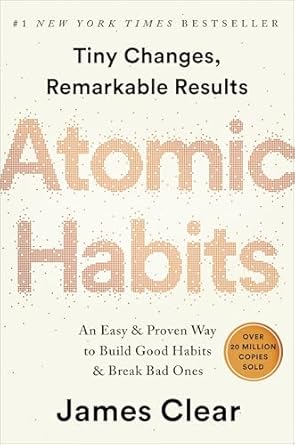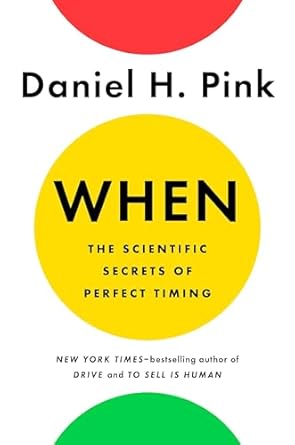Modern project management tools help optimize workflows, improve team collaboration, and significantly increase productivity. These solutions provide a centralized platform for organizing tasks, managing resources, and tracking progress. Key takeaways
Structuring your day working from home
Being productive in the comfort of your home is all about organization and structure. In this article, we’ll share fresh, practical tips to help you build a daily routine that supports steady focus and boosts your productivity throughout the day.
Key takeaways
Well-timed breaks are the key to maintaining steady focus
Clear boundaries are the foundation of productivity
Planning and prioritization can turn chaos into a clear, logical system
Why is structure important?
Working from home is undoubtedly a very good thing – at least something good to come out of the pandemic. But it does come with a whole bunch of side effects – that’s freedom for you. These include: waking up at 8 a.m. for a meeting and then going right back to sleep, your pajamas basically becoming your second skin, and three healthy meals a day merging into one reheated pizza stretched out over two days (it is a big pizza, yes).
This article isn’t about Instagram-perfect daily routines – god no. Leave those lies to people making money off views. However, there are some pretty efficient methods that’ll help you keep the balance between work and private life in check.
Morning rituals: a head-start on daily tasks
The first minutes after you wake up can determine how the rest of your day will go—and that’s not a myth. That’s why morning rituals play a pivotal role in setting you up for a successful day.
Yes, they’re partially just mechanical actions you perform every morning, but they also carry a spiritual and motivational purpose.
It’s all about consistency. When you wake up at the same time every day, your brain knows exactly when to “turn on.” Even on weekends, try to stick to your sleep schedule—it’ll make habit-building way easier in the long run.
- Face washing and a bit of physical activity. Those “urgent” 7 a.m. meetings are great and all, but keep your morning for yourself and your health. A short stretch session (around 20 minutes) will get your blood flowing, your brain thinking, and your while system up and running.
- Hydration. One glass of water right after waking up will activate your body, restore the fluids lost overnight, and help prevent that classic morning exhaustion.
- Day planning. Make a small list or set an overall goal for the day. The clearer your target, the less time you’ll waste wondering what to do—and that means lower stress and better focus.
- Dress to impress (yourself). Yes, your sweatpants and rock-band T-shirt are incredibly comfy—god forbid anyone tells you otherwise. But sometimes, productivity needs you to step just a bit out of your comfort zone. A clean, casual outfit (nothing too serious) can help shift your mindset and set the tone for a more productive day.
Lifehacks for your morning routine
- “5-Minute Start” Technique: Start small—pick a morning activity and dedicate just 5 minutes to it. Then build from there: 5 minutes for stretching, 5 minutes for planning, 5 minutes for journaling. Breaking it down like this makes it much easier to stick to in the long run.
- Timing: Use simple timers for each part of your routine. This keeps you from lingering too long on any one task and helps you track your progress in real time.
- Success Visualization: Take a moment to imagine yourself in the evening—content, satisfied, and ready for the next day. That mental image can give you the motivation to push through whatever’s ahead.

Daily planning
A proper morning is a great start, but let’s not forget—we have a whole day ahead. A day full of urgent tasks, assignments, difficult conversations with our bosses, and, well, work. Here are a couple of tips from our team on structuring your daily routine:
- Time-blocking. A system built around blocks (duh). The idea is to divide your day into specific blocks—say, cooking, cleaning, working—and then fill each with tasks that match. When you’re not spreading your attention across multiple types of tasks but handling them gradually, productivity and focus come a lot easier.
- Priorities. That report due tomorrow? Definitely more important than the pile of dirty dishes. Yes, dishes matter, but they’ll wait just fine. Putting “important/crucial” mental labels on each daily task gives you the perspective you need to tackle what truly matters first.
- Types of tasks. Break your to-do list into categories: routine, creative, analytical, organizational—you name it. Start your day with the category you dread the most, then move on to the easier or more enjoyable stuff later. Energy well spent.
Instruments for easy planning
One good thing about capitalism? There’s a whole bunch of products for every need and request. So, building your daily routine and making your day more productive can be much easier with the right tools and apps:
- Task trackers: Taskee, Todoist, Any.do – great tools for tracking tasks, progress, and deadlines.
- Calendars: Google Calendar or Outlook – free, easy-to-use web tools for daily and weekly planning.
- Time-blocking software: Clockify, Toggl, RescueTime – efficient time-trackers that help you understand exactly how much time you’re spending on each task.
Building a proper structure
Finally, we’ve downloaded a couple of apps on our phone, made a plan, and are ready to take on the day. What’s next? The next step is actually sticking to it long enough for your brain to start remembering the rhythm. Check your working hours and start building around them.
Here’s an example of an everyday schedule (with a 9 to 6 workday in mind):
- Morning routine (8:30 – 9:00). We’ve already dedicated a whole section to this earlier in the article, so we won’t dwell on it here.
- Start of focused work (9:00 – 10:30). Begin your day with the most important tasks. The first hour and a half is your prime time for deep, focused work—think project planning, content creation, or tackling complex problems. Use time-blocking to concentrate on a single task with no distractions.
- First work block (10:30 – 12:30). Continue with important tasks. This is another good slot for deep work—whether it’s larger assignments, responding to key emails, or holding essential meetings. Take short breaks every 45–60 minutes to stay sharp.
- Lunch break (12:30 – 13:30). Full reset. After a productive morning, take a proper break. Step away from your desk, eat lunch without gadgets, and, if possible, go outside. This helps recharge your brain and sets you up for a better afternoon.
- Second work block (13:30 – 15:30). Less focus, more routine. In the afternoon, shift to lower-intensity tasks—admin work, planning, emails, or reviews. Lighter tasks help avoid burnout and ease you into the later part of the day.
- Short break (15:30 – 15:45). Quick reset. Stretch, take a light walk, grab a drink—whatever helps you recharge. Even 10–15 minutes can make a difference.
- Final work block (15:45 – 17:30). Wrap it up. Use this time to finish remaining tasks, clear out your to-do list, or prep for tomorrow. This block doesn’t require heavy focus—perfect for tying up loose ends.
- End of the workday (17:30 – 18:00). Transition to personal time. End your day at a clearly defined time. Turn off work notifications, shut the laptop, and make space for rest. Clear boundaries help you recover—and make the next day that much easier.
Healthy amount of breaks
Don’t forget that no matter how structured and organized your day is, if you feel like you need a break—take it. A couple of minutes, an hour, maybe even a full-on week-long break from work—listen to your body when it asks for rest.
Of course, longer breaks might not always be financially viable, but proper micro-breaks throughout the day, a real lunch break, and maybe an after-lunch walk in the park can make energy conservation feel effortless.
It’s not laziness—it’s exactly what your brain needs.
Interesting fact 
According to a study by the University of California, it takes around 23 minutes to fully return to a task after being distracted. During an 8-hour workday, just 5–6 distractions can cost you 2–3 hours of productive time.
Related articles:
To optimize your workflow, check out Effective Tips for Successful Remote Work.
To create the best working atmosphere at home, read about The Impact of Music on Productivity.
To ensure each workday brings you closer to your goals, explore How to Set Goals and Achieve Success.
Conclusion
Find a balance between structure and flexibility. A rigid schedule can feel like a prison, while a lack of structure leads to chaos. The golden middle exists — and it's different for everyone. Design your day so it works for you, not the other way around. With a platform like Taskee, structuring your day becomes much easier.
Recommended reading 

"Deep Work: Rules for Focused Success in a Distracted World"
This book teaches you how to create conditions for deep focus in a noisy world, helping you achieve meaningful results.
On Amazon
"Atomic Habits: An Easy & Proven Way to Build Good Habits & Break Bad Ones"
The author shows how small habit changes can lead to big results through a system of gradual improvements.
On Amazon
"When: The Scientific Secrets of Perfect Timing"
Based on scientific research, this book reveals the optimal timing for different types of activities and teaches you how to structure your day in tune with your natural rhythms.
On Amazon






